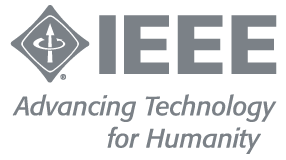Discovering DNA of an organization is an important way to create a shared sense of identity among even globally diverse, dispersed teams. Learn how to do it in 5 steps.

If you want to discover your organization's cultural DNA and use it to unite your team, for cryin' out loud don't rush over to your PR department to pick up a stack of those glossy brochures containing the company history and poignant stories of the founders. I know managers who have hundreds of these tree-killers stashed in their offices. Giving them out provokes cynicism, and pretty much guarantees they'll go straight into the recycling bin.
If you want a message to change the results you're getting in your team it must be Heard, Understood, Remembered, and Acted upon, so I strongly recommend using stories as the basis of your DNA discussions. It's all about stories. But those stories must be shared and discussed, not just read in a pamphlet. A story-based "DNA expedition" will generate increased loyalty to your company and inspire behavior that aligns with shared values discovered during your cultural DNA session.
The Founders and Key Moments in Your History. The first stories to explore are those of the people who founded your organization. Their stories often inspire admiration because of their courageous risk-taking, determination, or staunch commitment to something beyond making a profit. Here are a few of my favorite examples:
- Suntory - In 1899 Shinjiro Torii opened a wine shop in Osaka, Japan, and then proceeded to make a popular port wine domestically. Later Suntory was the first to distill whiskey in Japan. Of course, many people believed that it was impossible to make a great whiskey in Japan, but his "Yatte Minahare!" spirit (roughly translated, "Go For It!") prevailed.
- Kuraray - Magosaburo Ohara founded this company in 1926, and his son Soichiro Ohara has continued the legacy of "contributing to the world and individual well-being through actions that others are unable to produce." This would be just a slogan on a website if it weren't for my personal experience working with Kuraray for the past 10 years. I find myself quoting Mr. Ohara's advice to teams locked in an unproductive pattern of "death by consensus". He famously said "If we wait until everyone agrees, it's too late! We must take action when only two or three executives agree." Indeed!
- Yamaha - In 1887 Torakusu Yamaha built his first reed organ and hand-carried it over the mountains to the music university in Tokyo where it was flatly rejected due to its poor tuning. Undaunted, he created an improved version, and carried it once again on this torturous journey. This organ became the foundation of the Yamaha music business.
- Hewlett-Packard - The friendship forged by Bill Hewlett and Dave Packard in 1934 was the basis of a legendary company. I was fortunate enough to work there for 10 years while Bill and Dave were still a palpable presence in the form of The HP Way. As an idealistic young person who believed the stories in those glossy brochures, I felt it was my personal responsibility to live up to the legacy that these two gentlemen had created. This resulted in an annual chastisement in my performance reviews: "Kimberly has unrealistically high expectations for herself and others." Yup! Ya got that right! But it was Bill and Dave’s high expectations that I felt I was living up to, not my own.
In addition to studying the adventures of the founders, review significant internal and external stories that punctuate the company's history. Tales of expansion, new product launches, and other successes are valuable, but so are stories of perseverance during difficult times, as well as how people behaved when facing overwhelming challenges and setbacks.
Continue discovering your corporate DNA by “Exploring your Past”. Follow the 10 steps below.
1. Get ready
Prepare in advance by having each person read relevant stories from your organization’s past. In addition, ask people to think of stories from their own work experience that demonstrate your cultural DNA at it's very best.
2. Share stories
Sitting in a circle, have each person share a story that had the most positive impact on them, and explain why it impacted them.
3. Capture the essence
Writing BIG on sticky notes, have everyone in the group jot down a keyword or two that capture the "essence" of the company’s identity from each story.
Place these sticky notes on flipcharts in the center of the circle as shown in this picture.

4. Represent your DNA
Next, create a collage by combining these words with pictures that capture this essence in a way that words alone cannot describe. Ask participants to bring magazines and other pictures that express the cultural DNA, or use a set of pictures like CCL's Visual Explorer Cards.
Doing this activity silently is particularly useful for teams where people don't share a mastery of a common language. Play some music in the background to set the mood!
Piece these collages together to create a patchwork quilt that vividly conveys your cultural DNA. Don't you dare just throw them away when the exercise is over! Preserve and share them widely.

If the collage activity is just too "arts and craft-sy" for your people, try this variation. Gather in small teams around white boards, and together silently draw a picture that captures the essence of these stories. Then have each team present their team drawing without preparation. What essential qualities and characteristics of your organization’s culture were demonstrated through their drawings and presentations? Encourage the entire group to discuss the key qualities of your culture that were demonstrated by each team’s interpretation.

5. Discuss this exercise
Discuss what will survive into the far future. What will still be "core" 50 years from now? Determine which of these qualities and characteristics should be passed on to future generations and preserved for the long-term future of your organization.
Brainstorm how these core cultural elements serve as guiding principles in your business today. What stories from your own experience align with these principles? What other situations are you facing that could benefit from the values and behaviors modeled in these stories? How can we demonstrate the very best of our collective past through our own behaviors in the present?
Sharing and discussing these stories as a team can produce powerful insights about what is admired and valued in your organization, and influences people to behave similarly.
Who We Are NOT! In general, people seem to find it easier to think from a negative perspective, and the next exercise directly appeals to that tendency. This is a fabulously fun exercise and one that even engineers enjoy. Ideally, you should do it right after the first exercise.
If you’re interested in this topic, Kimberly Wiefling currently teaches the class “Building a Great Company Culture” as part of the Leading High Growth Ventures Program at the TVLP Institute. It’s a great opportunity to learn directly from a globally-recognized expert of leadership. Ms. Wiefling has helped a large number of companies in Asia, especially in Japan, and Europe in improving their teams. As an author, she published the well-recognized books of the series of five "Scrappy Guides."
Ph. Credit: Unsplash.


















